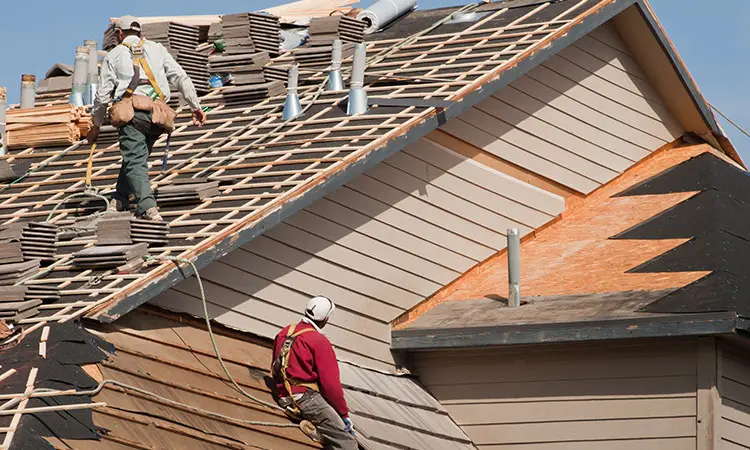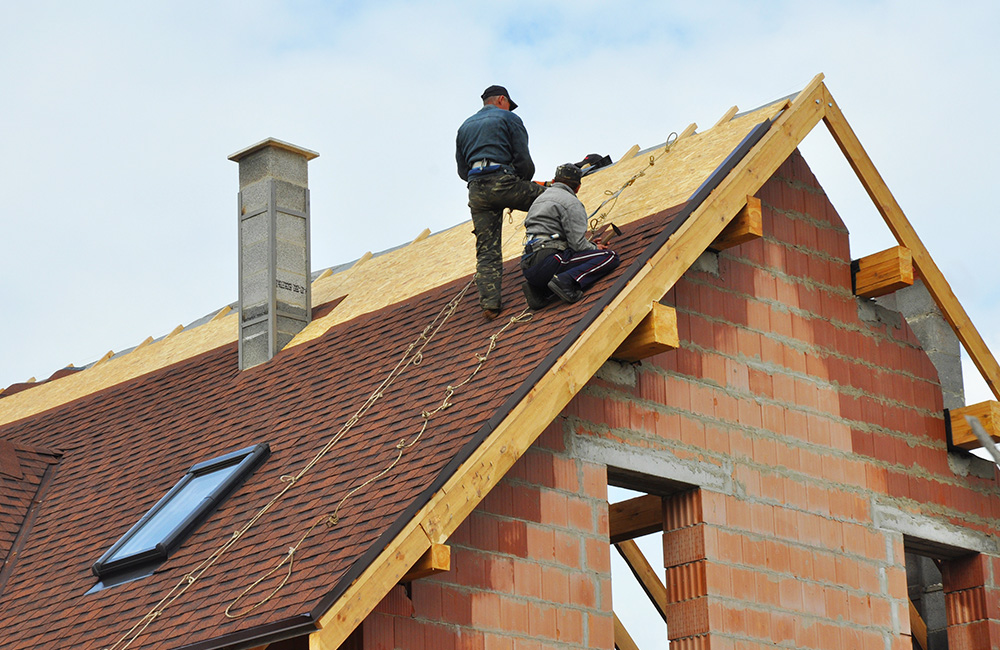Recognizing the Various Types of Roofing Systems: A Comprehensive Guide for Homeowners
In the world of homeownership, choosing the suitable roofing style is a decision that brings substantial effects for both functionality and aesthetic allure. With an array of alternatives-- varying from the typical gable to the contemporary flat-- each type provides special advantages and difficulties that must straighten with the property owner's certain requirements and ecological factors to consider. Comprehending these differences not only help in making an enlightened choice however additionally affects long-lasting maintenance and power effectiveness. As we discover the complexities of various roofing kinds, it ends up being obvious that a person dimension does not fit all; the best choice may stun you.
Saddleback Roof
Saddleback roofs, identified by their triangular form, are among one of the most prominent roof designs due to their simpleness and performance in shedding water and snow. This layout includes 2 sloping sides that satisfy at a ridge, permitting effective water drainage and minimizing the danger of water build-up. The steep pitch frequently connected with saddleback roofs enhances their capability to deal with hefty precipitation, making them suitable for numerous climates.
In addition to their practical benefits, gable roofings supply visual flexibility. They can be adjusted to different building designs, from standard to modern homes. The style can also suit additional attributes such as dormer home windows, which enhance natural light and ventilation in the attic room space.
Moreover, gable roof coverings supply ample room for insulation, adding to power performance. Home owners can select from a variety of roofing materials, including asphalt shingles, steel, and floor tiles, even more boosting modification alternatives.
Despite their advantages, gable roofs might need additional support in areas vulnerable to high winds or hefty snowfall. Overall, the gable roofing continues to be a popular selection as a result of its blend of functionality, longevity, and aesthetic allure.
Flat Roofs
Flat roofing systems are often recognized for their minimal layout and sensible applications, particularly in business and industrial settings (oahu roofing). These roof coverings include a horizontal or nearly straight surface, which permits simple construction and versatile area utilization. While they may lack the aesthetic charm of pitched roofings, level roofing systems use countless benefits, particularly in urban settings where making best use of space is vital
Among the primary advantages of flat roofings is their availability. House owners can utilize the roof space for various functions, such as rooftop gardens, terraces, or solar panel installations. In addition, flat roofs are generally much more economical to mount and keep contrasted to their sloped equivalents, as they need fewer materials and labor.
Nevertheless, flat roofings do existing particular obstacles. Appropriate water drainage is vital to prevent water pooling, which can result in leaks and structural damage. Thus, choosing top quality waterproofing materials and normal inspections are vital for making sure long life. Usual materials used for flat roofings include built-up roofing (BUR), customized asphalt, and single-ply membranes, each offering distinct benefits. On the whole, level roof coverings function as a practical and versatile option for many homeowners and companies alike.
Hip Roofs
Hip roofing systems are identified by their sloped sides that converge on top, forming a ridge. This layout stands out from saddleback roofs, as all 4 sides of a hip roof great site incline downwards towards the wall surfaces, offering an extra secure structure. The angle of the inclines can vary, permitting adaptability in architectural looks and capability.
Among the main advantages of hip roofing systems is their ability to endure heavy winds and negative climate condition. The sloped surface areas allow much better water drain, reducing the danger of leaks and water damages. Furthermore, hip roof coverings provide increased attic area, which can be utilized for storage space and even exchanged habitable locations.
Nevertheless, constructing a hip roof covering can be more complicated and pricey than less complex roofing types, such as saddleback roofs. The added material and labor involved in producing the slopes and making sure appropriate structural stability can cause greater expenses. Despite these disadvantages, lots of house owners prefer hip roofs for their longevity, aesthetic allure, and capacity for power efficiency.
Mansard Roofing Systems
Mansard roofing systems, usually identified by their distinct four-sided design, feature two inclines on each side, with the reduced incline being steeper than the upper. This architectural design, stemming from France in the 17th century, is not just aesthetically appealing yet useful, as it makes best use of the useful room in the top floors of a structure. The high reduced slope enables more headroom, making it a perfect option for loft spaces or attics, which can be transformed right into living rooms.
Mansard roofings are identified by their versatility, suiting various architectural styles, from conventional to modern-day. They can be built with various materials, including asphalt shingles, slate, or steel, offering homeowners with a series of alternatives to fit their spending plans and preferences. Additionally, the design permits the integration of dormer windows, enhancing natural light and air flow in the upper levels.
However, it is vital to take into see this consideration the prospective disadvantages. Mansard roof coverings may need more maintenance because of the intricacy of their design, and their high inclines can be testing for snow and rain overflow. In general, mansard roof coverings integrate sophistication with functionality, making them a preferred choice amongst home owners seeking unique architectural functions.
Dropped Roofing Systems
As property owners increasingly seek simplicity and functionality in their architectural designs, shed roofings have actually become a prominent choice. Identified by a single sloping plane, a shed roofing system provides a minimalist aesthetic that enhances different home designs, from modern to rustic.
One of the key benefits of a shed roofing system is its straightforward building, which frequently translates to lower labor and material costs. This design allows for reliable water drainage, reducing the danger of leaks and water damages. In addition, the vertical incline supplies sufficient room for skylights, enhancing all-natural light within the interior.
Dropped roof coverings additionally offer adaptability in regards to use. They can be efficiently integrated right into enhancements, garages, or exterior structures like structures and sheds. Additionally, this roof covering design can fit various roofing materials, including metal, asphalt roof shingles, or even green roof coverings, straightening with eco-friendly initiatives.
Nevertheless, it is necessary to consider regional environment conditions, as heavy snow loads might require modifications to the roof's angle or structure. Generally, dropped roofings offer a functional and visually pleasing option for home owners wanting to optimize performance without endangering design.
Final Thought


Gable roofing systems, characterized by their triangular shape, are amongst the most preferred roof designs due to their simpleness and effectiveness in dropping water and snow. oahu roofing. The steep pitch generally connected with gable roofs enhances their ability to take care of hefty precipitation, making them ideal for various climates
While they may do not have the aesthetic allure of visit their website pitched roofs, flat roofs provide many advantages, specifically in city atmospheres where making best use of room is critical.
